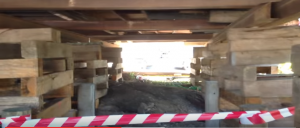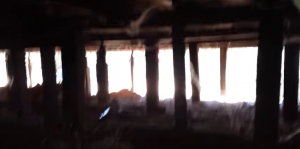What is Re-stumping (re-blocking) a house?
Re-stumping can also be referred to as re-blocking in other countries. This is a process of replacing timber stumps that are responsible for supporting the house due to rotting or improper installation at the first time.
Steps to re-stumping a house
 After deciding to do re-stumping to your house, the first step to take is to select the ideal stump you intend to use.
After deciding to do re-stumping to your house, the first step to take is to select the ideal stump you intend to use.
l Opt for timber stumps which are resistant to rotting. The most common stumps used are red gums as they are readily available, durable to 20 years of life, and cheap by 10% less than concrete.
l After obtaining the stumps, the next step is to look for a right contractor to do the re-stumping.
l The contractor you hire should be one with many hydraulic jacks for the purpose of lifting the building to be renovated.
l During the process of restumping Melbourne, make sure the floor is well re-leveled and a proper fixation of stumps to bearers.
Factors that influence Re-stumping cost
Property height: if the house to be re-stumped seems to be low, it will result hard for the contractors to have access of its underneath. Because of this, they will be forced to do some excavation before re-stumping. When a house is high enough, re-stumping becomes easier as mini-diggers can do the job.
The condition of the soil: the type of soil that your house is built on determined the work load to be done during restumping. It is wise to do soil testing for establishing the required footing foundation and depth.
restumping. It is wise to do soil testing for establishing the required footing foundation and depth.
Can restumping process be done at once? Definitely, it would be better if all work is to be done at once to save time and money
Existing foundations: it will be money and time saving if the foundation that exists is re-used in re-stumping
What is underpinning.
This is the process of strengthening the existing foundation of a building. A house can be underpinned because of:
l When one need to change the house structure because of a different usage
l Variation of soil properties that have been holding the house foundation
l Need for depth increase or need to add another storey
l When the house needs to be kept stable after being moved naturally by calamities like earthquakes or floods.
Generally, this underpinning process is carried out through foundation expansion either by increasing its depth and width so as to keep it standing on a firm ground. This process involves methods like the grouting of jets and micro piles. Alternatively, it can be done through soil strengthening when a gout is introduced.
Types of house underpinning.
Base and beam underpinning– in this kind of underpinning, a beam of concrete is constructed below or above an already existing footing
Traditional underpinning– this type is also called mass concrete underpinning. Here, some underneath box excavation is done, followed by a planned filling of the boxes with concrete. Basically, it is another foundation that is constructed below the one that already exists.
When you want to avoid constructing a new house, underpinning is the method to be used, as it saves a lot of money, space and work of course! Contact .